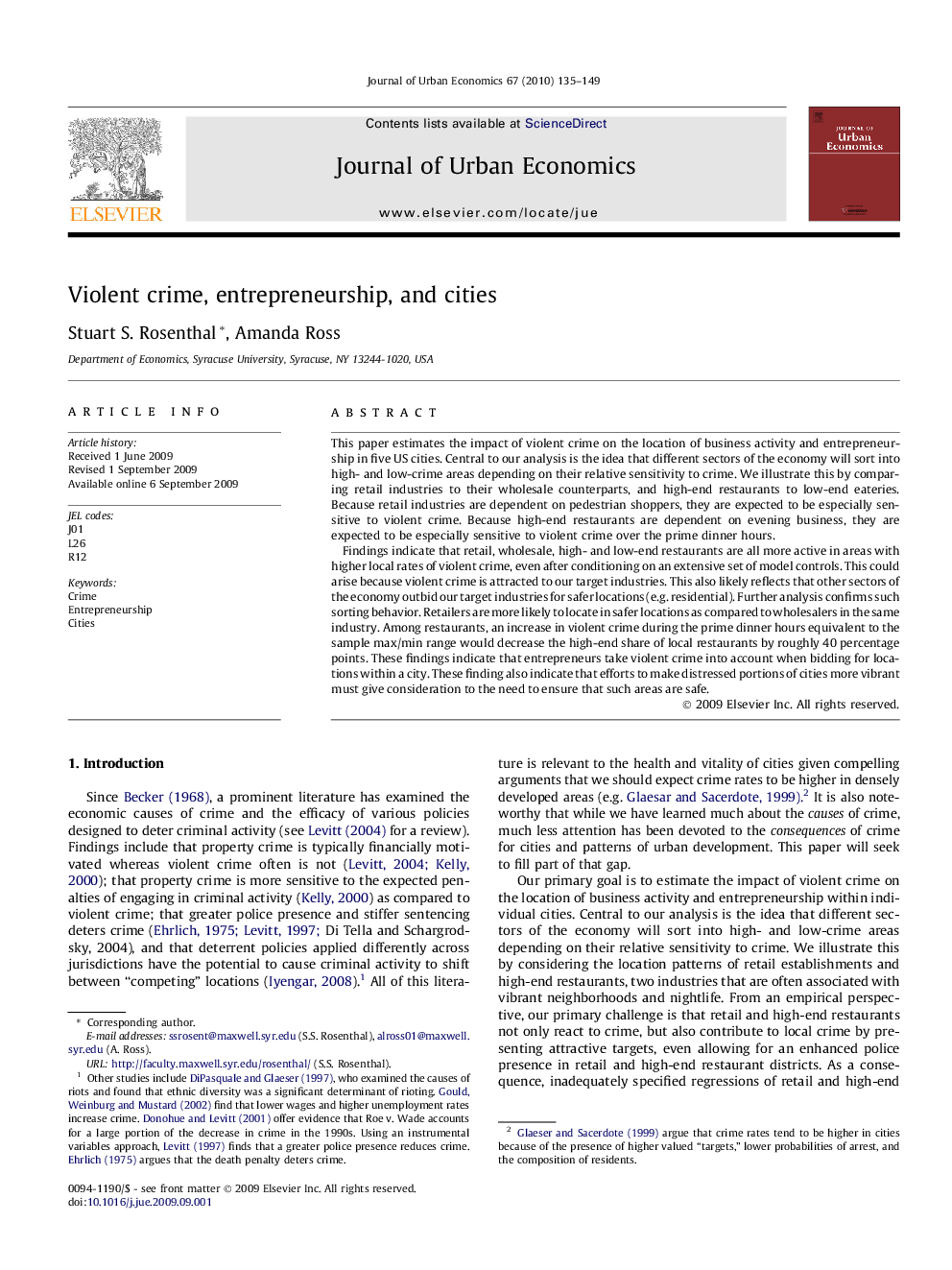| کد مقاله | کد نشریه | سال انتشار | مقاله انگلیسی | نسخه تمام متن |
|---|---|---|---|---|
| 971944 | 932426 | 2010 | 15 صفحه PDF | دانلود رایگان |

This paper estimates the impact of violent crime on the location of business activity and entrepreneurship in five US cities. Central to our analysis is the idea that different sectors of the economy will sort into high- and low-crime areas depending on their relative sensitivity to crime. We illustrate this by comparing retail industries to their wholesale counterparts, and high-end restaurants to low-end eateries. Because retail industries are dependent on pedestrian shoppers, they are expected to be especially sensitive to violent crime. Because high-end restaurants are dependent on evening business, they are expected to be especially sensitive to violent crime over the prime dinner hours.Findings indicate that retail, wholesale, high- and low-end restaurants are all more active in areas with higher local rates of violent crime, even after conditioning on an extensive set of model controls. This could arise because violent crime is attracted to our target industries. This also likely reflects that other sectors of the economy outbid our target industries for safer locations (e.g. residential). Further analysis confirms such sorting behavior. Retailers are more likely to locate in safer locations as compared to wholesalers in the same industry. Among restaurants, an increase in violent crime during the prime dinner hours equivalent to the sample max/min range would decrease the high-end share of local restaurants by roughly 40 percentage points. These findings indicate that entrepreneurs take violent crime into account when bidding for locations within a city. These finding also indicate that efforts to make distressed portions of cities more vibrant must give consideration to the need to ensure that such areas are safe.
Journal: Journal of Urban Economics - Volume 67, Issue 1, January 2010, Pages 135–149